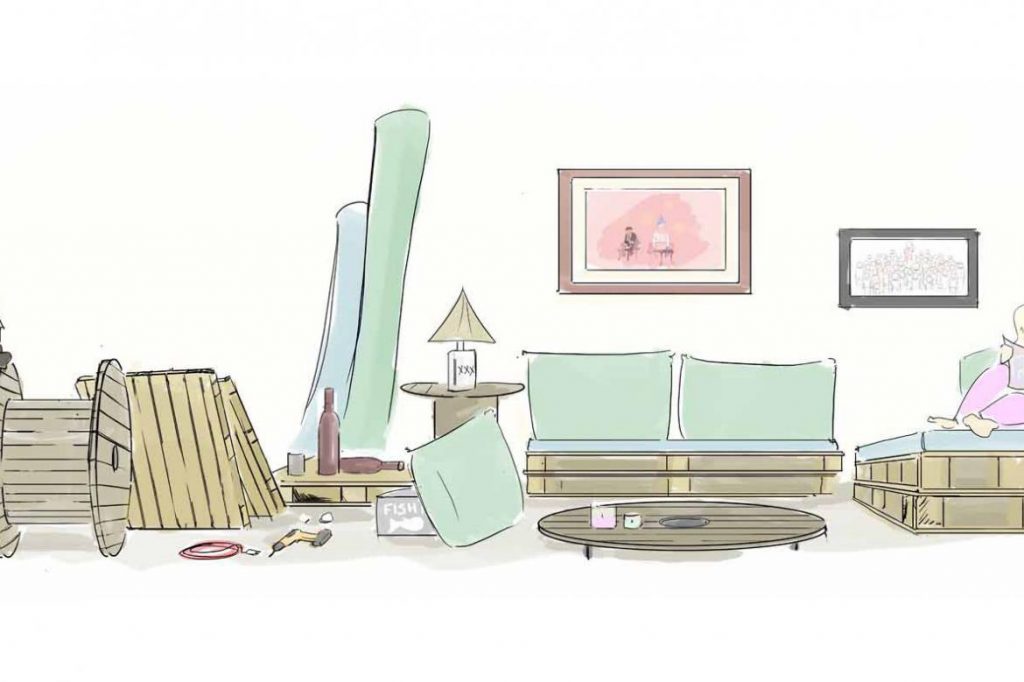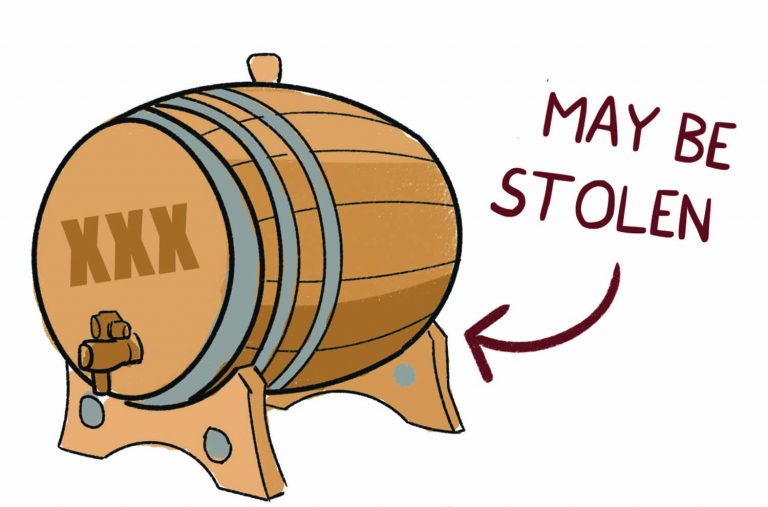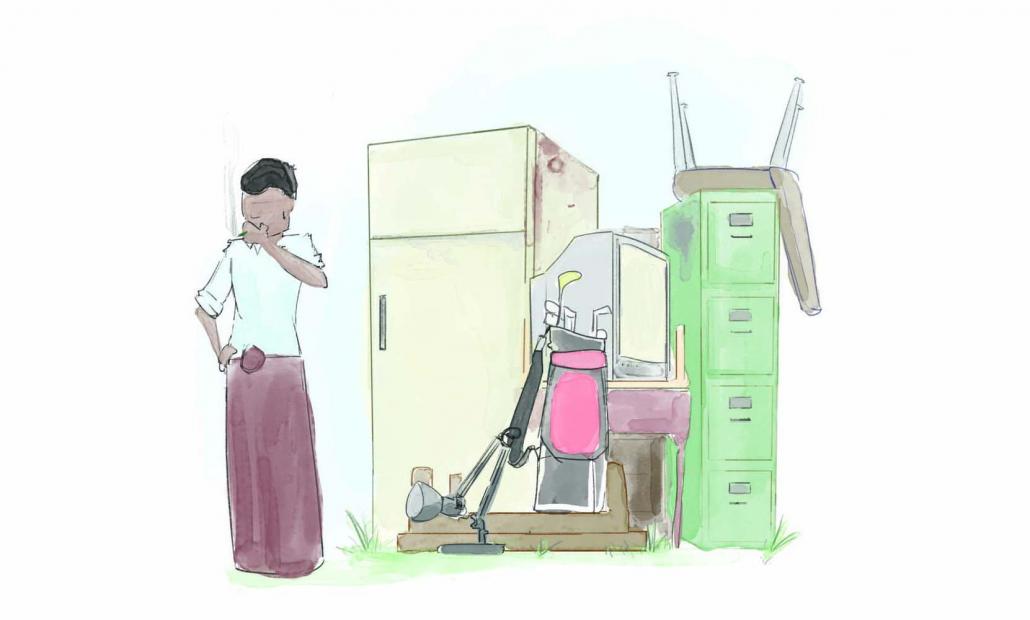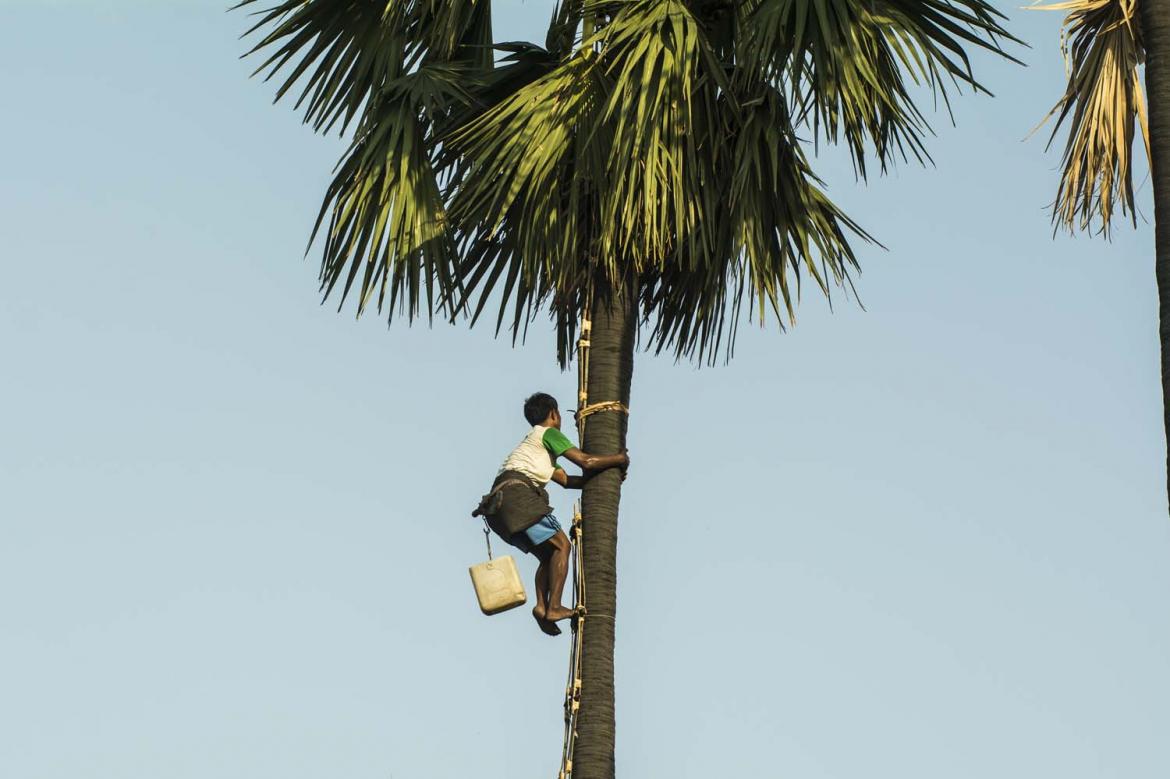Your helpful guide in how to forage an entire apartment of furniture from the city’s natural industrial bounty – on the cheap.
By JARED DOWNING | FRONTIER
FURNITURE IS Yangon’s great equaliser. Sure, hip young expats and the budding middle class can put on airs and graces with their fancy bars and pizza delivery, but when it comes to furnishing our apartments most of us are stuck with cheap, Chinese pre-fab and tacky linoleum veneers, just like everybody else.
Fortunately, DIY is in vogue this decade and Yangon has enough discarded crates, pallets and bottles to make even the most hardcore Pinterest-er swoon.
Pallets for all uses
My former roommate made a bed with a stack of wooden loading pallets, and when he decided to leave Yangon his friends held an auction for it. Pallets can be used to make anything from sofas to chairs to tables. A layer of varnish and a few nice cushions are all they require to take them from a pile of wood and nails to a “tastefully re-purposed living room set”.
The city’s best pallet bazaar is located on 54th Street, between Strand and Merchant roads, where craftsmen assemble the products in various shapes and sizes and sell them for between K5,000 and K6,000. Just a few blocks away, it is easy to commission inexpensive custom cushions at a wholesale foam and upholstery market on Bo Aung Kyaw Street, between Anawratha and Mahabandoola roads.
Support more independent journalism like this. Sign up to be a Frontier member.
If you want to give something back while you’re filling up your apartment, the Women’s Development Centre on Thanlwin Road sells enormous fluffy pillows with attractive Shan fabrics, the proceeds of which no doubt go to a good cause.
Critics might argue that pallet furniture tends to be too close to the floor, but the upside of that is that they make a low ceiling look large and, as any yoga instructor will tell you, the closer to the floor furniture is the more exotic it looks.
The pallet-makers on 54th Street are very adaptable and can provide any piece of furniture you can think of – provided you’re looking for something with planks nailed together. In addition to my bed and sofas, they have made two bookshelves, a coffee table, TV stand, a kitchen counter and the desk I am writing this column from.
Industrial spools, or ready-made tables
The next time you’re at Parami Pizza on Parami Road, take a close look at the tables: They’re spools. Already round and tabular, industrial spools make for excellent tables of all varieties, including coffee, cocktail and dining.
They also tend to be stencilled with cool commercial lettering, a reminder to your guests that the table has been “re-purposed” and was not, in fact, wrestled into a hatchback taxi at 2am.
Spools are cheap and abundant. Once you start looking for spools, you will find them lying around everywhere, especially near high-rise projects that are under construction.
If the construction plot is empty, you can probably take it, but if you’re not someone who is prone to stealing there are a number of electrical wire shops on 31st Street, between Anawrahta and Mahabandoola roads, where empty spools-galore are waiting to be pawned off for a token sum (they are practically being given away, so you won’t need to pay more than K10,000 for one).
The round disks at the end of the tables are nailed on and can easily be prized off with a crowbar. Be sure to hammer down any loose-hanging parts, and give it a good sanding and a coat of gloss.
Or, if you have a high-profile guest coming and you want to get really fancy, Yadanabon Glass Enterprise on Bo Soon Pat Street, between Anawratha and Mahabandoola roads, specialises in glass table tops. A pane of glass for your spool table should cost between K10,000 and K20,000.
Build-your-own lamps
Lamps are so easy to make, I’m surprised anyone buys them when they can brag about the one they crafted from an old guitar or a biscuit tin.
Lamps have only four parts: A light socket, length of wire, a plug and a stand, all of which can be purchased at your neighbourhood sundry shop and assembled with nothing more than a screwdriver.
Wine or whisky bottles are the country club favourite for hipster DIY lamps. Drill a hole in the bottom with a diamond dust-tipped glass cutting bit (which is a lot cheaper and easier to find than it sounds), then thread the wire through, attach the wall plug to one end of the wire, the socket to the other end, and finally stick the socket to the mouth of the bottle with epoxy (i.e., the glue that comes in two parts you mix together).
For the lamp shade, you can buy one pre-made, or wrap fabric, or something even more eccentric, around a wire frame.
For the little things
The Pro One hardware store on Lanthit Road in Insein Township has all your hardware needs in one place and has the added bonus of stocking products packaged and labelled in English – instead of heaped in rusty piles on a tarp. They sell items including power tools, cut lumber and drill bits designed for glass or concrete walls. You can also buy wholesale Formica panels for wall-sized white boards.
Filling your home
The good news is that large-size prints and custom frames are inexpensive in Yangon. The other piece of good news is that almost anything looks good when put on display; in 1917 French artist Marcel Duchamp demonstrated this phenomenon when he signed a bathroom urinal and placed it in an art gallery.
A cereal box, a random page cut out of a Myanmar dictionary or a photo of a random subject (a lobster, for example) will look tasteful and sophisticated once put behind a nice-looking frame.
Good frame shops are difficult to find in Yangon, but two recommended stores are Thiriwaimon Gallery on University Avenue, near the corner of Kabar Aye Pagoda Road, and TM Photo Framing Decoration on the corner of Anawratha Road and 31st Street; these services are crucial for passing your random bric-a-brac off as high art.
The junk sellers on the pavement at Bogyoke Market are a treasure trove of old photographs and frameable junk. Recently I bought an old tarnished make-up kit and framed it in a decadent black velvet display case. Alongside it is a description about how it was a toxic makeup used by a Burmese spy to put people to sleep; I’m considering sending it to the National Museum to see what they think of it.
If you don’t want to bother with a frame, try wrapping, by stapling a print around a wood stretched-canvass frame. There is a fine art shop on 33rd Street, between Bogyoke Aung San and Anawrahta roads, that has piles of canvass frames in various size that can be bought for a few thousand kyat.
Incidentally this art shop is located in the print advertising district where you can purchase a large-scale print on photo paper for about K6,000.
If you’re looking for images to print, there are many historic images of Myanmar located in different stores around the city. If you want to search online, cinemamaterials.com has high-resolution classic movie posters and just last month, the US Central Intelligence Agency declassified a trove of USSR-era maps that are available on their Flickr page (the CIA really does have a Flickr page).
Happy hunting.






